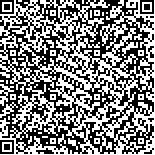| 摘要: |
| [摘要] 目的 探讨右美托咪定应用于妇科腹腔镜手术患者中对全麻苏醒期的效果及应用价值。方法 选取该院进行腹腔镜手术治疗的104例子宫肌瘤或者卵巢囊肿患者,按随机数字表法将患者分为观察组(右美托咪定组)和对照组(生理盐水组)各52例,观察两组麻醉效果和苏醒期的有效性和安全性。结果 观察组拔管时平均动脉压(MAP)(101.84±5.41)mmHg,拔管后5 min MAP(91.38±5.06)mmHg,拔管后10 min MAP(90.34±4.89)mmHg,拔管后15 min MAP(86.47±4.32)mmHg;拔管时心率(HR)(88.34±6.45)次/min,拔管后5 min HR(83.48±5.78)次/min,拔管后10 min HR(81.53±5.15)次/min,拔管后15 min HR(80.02±4.47)次/min;均优于对照组,组间比较差异有统计学意义(P<0.05)。观察组呼吸恢复时间(5.32±1.83)min,意识恢复时间(9.22±2.36)min,拔管时间(11.89±2.88)min;对照组分别为(5.41±1.79)min、(9.19±2.41)min、(11.95±2.79)min,组间比较差异无统计学意义(P>0.05)。观察组Riker镇静和躁动评分(4.03±0.57)分,躁动发生率为5.77%,对照组为(5.32±1.63)分、34.62%,组间比较差异有统计学意义(P<0.01)。结论 右美托咪定应用于妇科腹腔镜手术患者中可以让血流动力学更加稳定,术后苏醒迅速、完全,值得临床推广应用。 |
| 关键词: 右美托咪定 腹腔镜 全麻苏醒期 |
| DOI:10.3969/j.issn.1674-3806.2017.01.15 |
| 分类号:R 614 |
| 基金项目: |
|
| The efficacy and safety of dexmedetomidine in patients with laparoscopic gynecologic surgery during anesthesia recovery period |
|
ZHANG Jie
|
|
Department of Anesthesia, the Second People′s Hospital of Xinxiang City, Henan 453000, China
|
| Abstract: |
| [Abstract] Objective To investigate the effects of dexmedetomidine on general anesthesia in patients with gynecological laparoscopic surgery.Methods One hundred and four cases with uterine myoma or ovary cyst were performed laparoscopic surgery and were divided into the observation group(treated with dexmedetomidine) and the control group(treated with normal saline) by the digital method, with 52 cases in each group. The anesthetic effect and safety during recovery period were compared between the two groups.Results MAPS were (101.84±5.41), (91.38±5.06), (90.0±4.89) and (86.47±4.32)mmHg respectiveiy at the time of extubation and 5, 10, 15 minutes after extubation. HRS were (88.34±6.45), (83.48±5.78), (81.53±5.15) and (80.02±4.47)times/min respectiveiy at the time of extubation and 5, 10, 15 minutes after extubation. The improvements of MAP and HR in the observation group were significantly better than those in the control group(P<0.05). There were no sigaificant differences between the observation group and the control group in the time of breathing recovery[(5.32±1.83) vs (5.41±1.79)min], consciousness recovery[(9.22±2.36) vs (9.19±2.41)min], and in the extubation time[(11.89±2.88) vs (11.95±2.79)min](P>0.05). Riker sedation and agitation scores, and the incidence of agitation were[ (4.03±0.57) vs (5.32±1.63), 5.77% vs 34.62%] in the observation group and the control group(P<0.05).Conclusion Dexmedetomidine can make more stable hemodynamics and rapid and complete postoperative recovery during gynecologic laparoscopic surgery. |
| Key words: Dexmedetomidine Laparoscopy General anesthesia |

